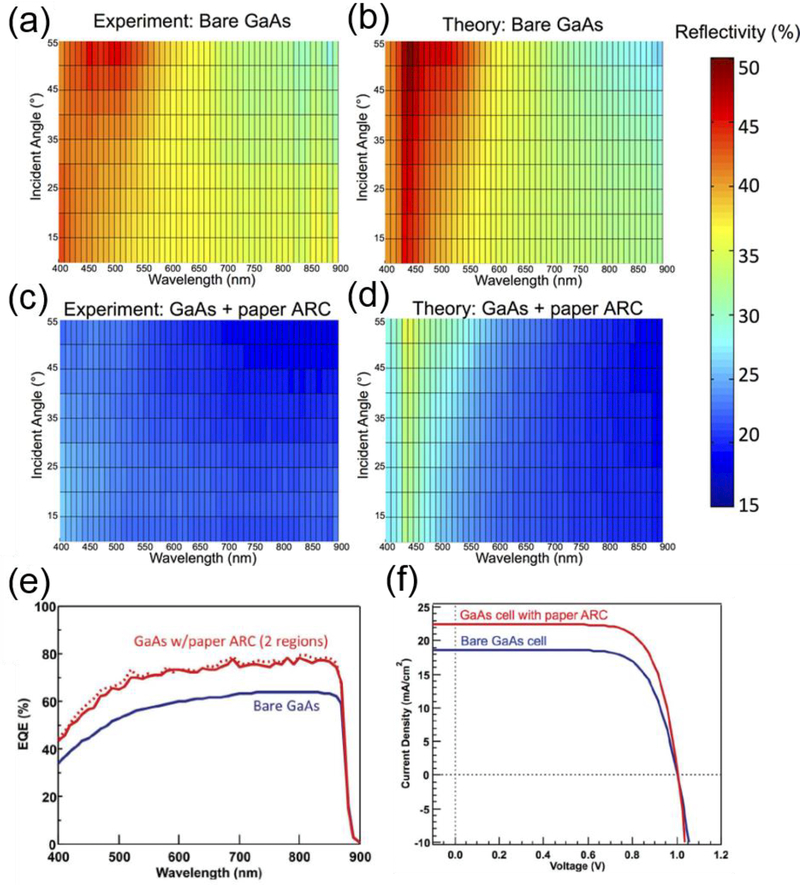Figure 3.
(a–d) Measured and calculated optical properties with and without a paper-based antireflection coating on a GaAs solar cell. (a) Measured reflectivity of a bare GaAs solar cell and (c) measured reflectivity of the same device with the transparent paper antireflection coating on top. (b) Calculated reflectivity for a bare GaAs substrate and (d) calculated reflectivity with the transparent paper antireflection coating layer on top of the GaAs substrate. All measurements and calculations are made as a function of incident angle and wavelength. Measurements are performed using an integrating sphere and monochromatic light. Calculations are made based on incoherent reflection model accounting for multiple reflections within the layer. Calculations satisfactorily agree with the experimental data. (e–f) Measured electronic properties with and without the paper-based antireflection coating on a GaAs solar cell. (e) EQE is measured over the operational spectrum of a GaAs solar cell. Blue solid line indicates measured EQE of a bare GaAs solar cell. Two different EQE measurements with the paper-based ARC (red solid and dotted lines) confirm improved electronic characteristic induced by absorptivity enhancements. (f) Current-voltage characteristics with (red solid line) and without (blue solid line) the paper-based ARC are determined. Increased light absorption within the active material improves the short-circuit current density by ≈ 20 %, which in turn results in ≈ 24 % enhanced power conversion efficiency with a little enhancement in the fill factor. Reproduced with permission.[53] Copyright 2014, Wiley-VCH.

